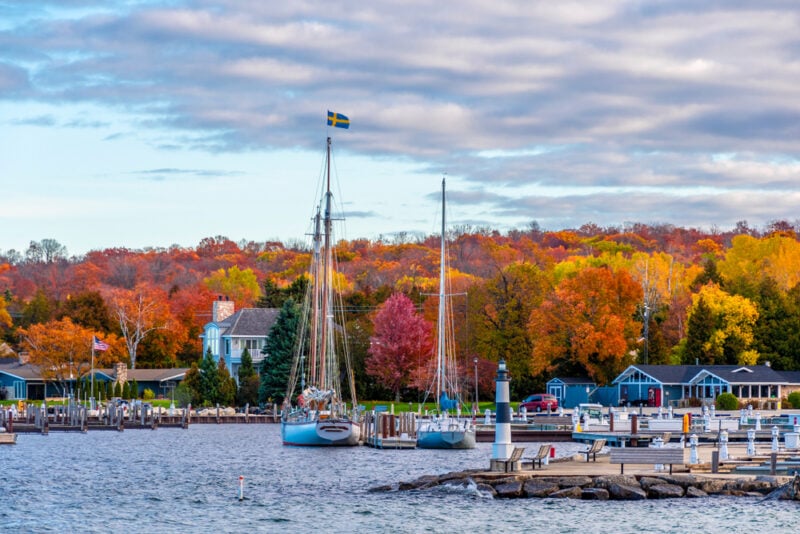The 30 Safest Neighborhoods in Alabama: Guide to Secure Living Areas

Alabama offers residents a diverse range of neighborhoods with varying safety levels, making it crucial for families and individuals to understand which areas provide the most secure living environments. From established suburban communities to growing towns, the state contains numerous neighborhoods that consistently demonstrate low crime rates and strong community safety measures.
Identifying the safest neighborhoods in Alabama requires examining crime statistics, community resources, and local safety infrastructure to help residents make informed housing decisions.
These neighborhoods span across different regions of the state, offering various lifestyle options while maintaining high safety standards. Understanding what makes these areas secure can guide potential residents toward communities that prioritize safety and quality of life.
Here are the 30 safest neighborhoods in Alabama:
1. Southside

Southside consistently ranks as Alabama’s safest city according to multiple safety analyses. The city boasts exceptionally low crime rates that fall well below both state and national averages.
Residents face only a 1 in 310 chance of becoming a crime victim. This statistic places Southside safer than 81% of all US cities and towns regardless of population size.
Within Alabama, only 16% of communities report lower crime rates than Southside. The city’s safety record stems from effective law enforcement and strong community engagement.
Southside sits along the scenic Coosa River, offering residents both security and natural beauty. The community maintains active sports leagues and neighborhood programs that foster social connections.
The city’s lakeside location contributes to its peaceful atmosphere. Low crime rates combined with community spirit create an environment where families feel secure and residents actively participate in local activities.
2. Helena

Helena stands as Alabama’s safest city, located in Jefferson and Shelby Counties. This quiet Birmingham suburb houses 20,914 residents and consistently ranks among the best places to live and raise families.
The city maintains an exceptionally low crime rate of 14.36 per 1,000 people. This figure significantly outperforms the national average of 33.37 per 1,000 people.
Helena residents face a 1 in 171 chance of becoming crime victims. The city performs better than 64% of U.S. cities and towns across all population sizes.
Within Alabama, Helena surpasses approximately 72% of communities in safety metrics. Both violent and property crime rates remain well below national benchmarks.
Major publications including Business Week and Money magazine recognize Helena for its family-friendly environment. The community offers strong amenities while maintaining its reputation as one of the lowest crime areas in the United States.
3. Tuscumbia
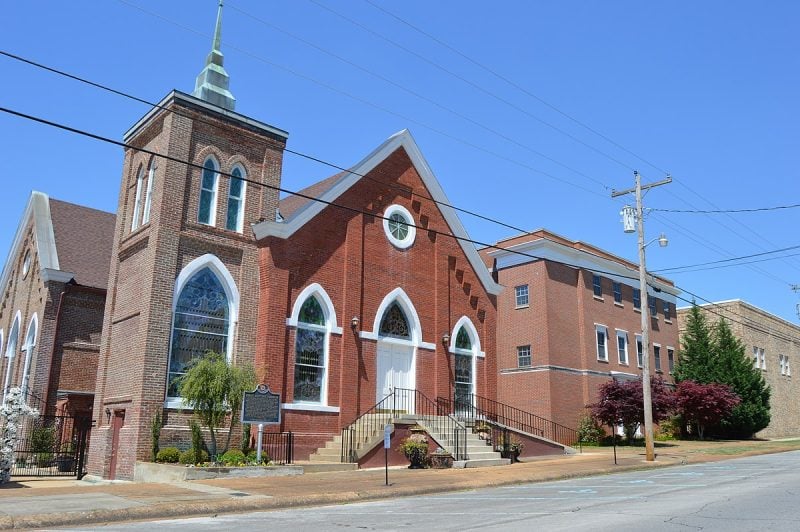
Tuscumbia ranks among Alabama’s safest cities with a crime rate of 308 per 100,000 residents. This rate falls significantly below the national average of 2,324.
Residents face a 1 in 153 chance of becoming a crime victim. The city’s crime rate is lower than nearly 69% of Alabama’s cities and towns.
The property crime rate stands at 13.09 per 1,000 residents annually. Crime risk varies by neighborhood location within the city.
The south part of Tuscumbia is considered the safest area. Property crime chances range from 1 in 127 in southern neighborhoods to 1 in 59 in northeastern areas.
Tuscumbia’s crime statistics compare favorably to similar-sized communities across the United States. The city maintains lower crime rates than both state and national averages.
4. Daphne
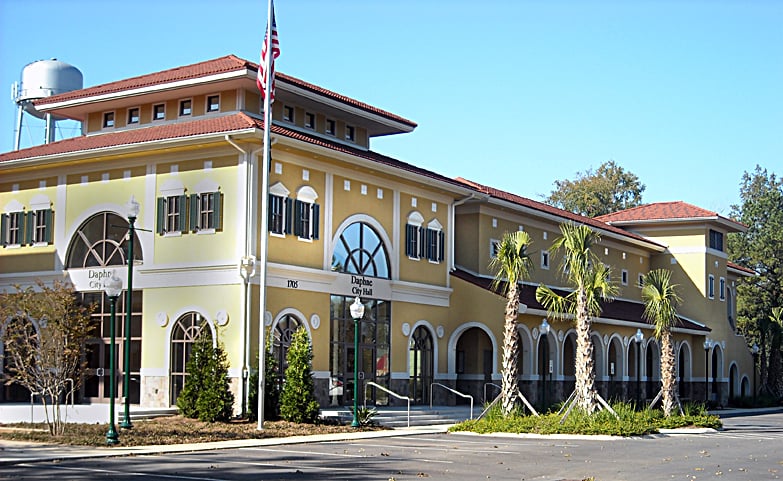
Daphne stands out as one of Alabama’s safest cities with remarkably low crime rates. The city recorded only 74 violent incidents per 100,000 residents, significantly below the national average.
Property crime rates in Daphne are equally impressive at 11.02 incidents per 1,000 residents. This compares favorably to Alabama’s state average of 29.26 per 1,000 residents.
The southeast part of Daphne is considered the safest area. Residents in this neighborhood face only a 1 in 218 chance of becoming property crime victims.
Located in Baldwin County, Daphne maintains a violent crime rate of 10.2 compared to the national average of 22.7. The city’s property crime rate sits 37.5% below the national average.
Home security companies have recognized Daphne among Alabama’s safest places to live. The city continues experiencing growth with new neighborhoods and strong real estate activity.
5. Mountain Brook
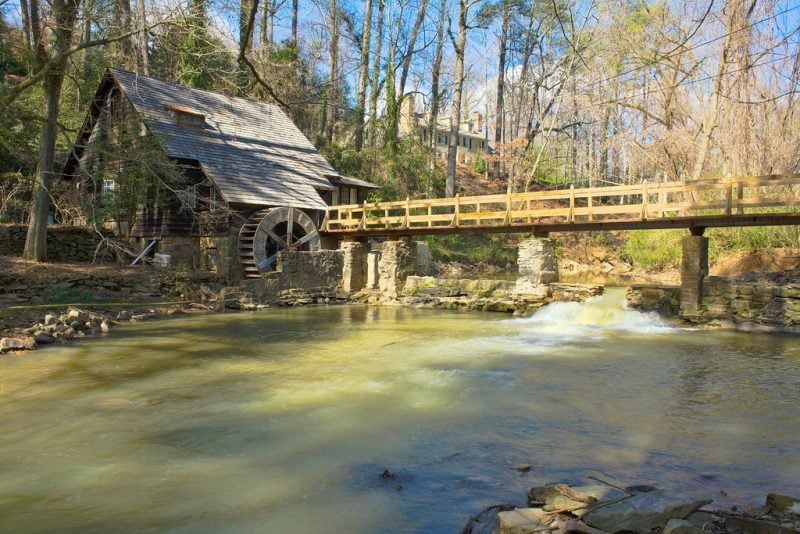
Mountain Brook stands as one of Alabama’s premier safe communities. The city maintains a total crime rate that is 58% lower than the national average per 100,000 residents.
Daily crime statistics show Mountain Brook experiences only 0.58 total crimes per day. This breaks down to 0.02 violent crimes and 0.56 property crimes daily.
The city’s crime rate ranks lower than approximately 58% of Alabama communities. When compared to similar-sized communities, Mountain Brook demonstrates noticeably superior safety performance.
Mountain Brook’s eastern location relative to Birmingham provides convenient downtown access while maintaining residential security. The area consistently appears on Alabama’s safest cities lists alongside Vestavia Hills and Hoover.
Quality of life indicators align with the low crime statistics. The community offers both safety and accessibility for residents seeking secure neighborhood living.
6. Vestavia Hills
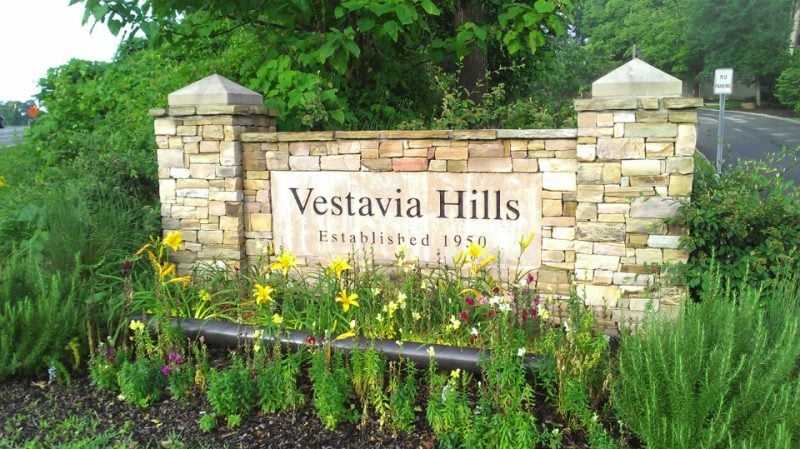
Vestavia Hills stands out as one of Alabama’s safest communities. The city maintains a crime rate of 9 per 1,000 residents, placing it near the national average for all cities.
Residents face a 1 in 108 chance of becoming a crime victim. The violent and property crime rates fall significantly below both state and national levels.
This Birmingham suburb sits near Shades Mountain and offers a strong sense of community. The area attracts families seeking safety and quality education opportunities.
Vestavia Hills features excellent public schools and well-maintained parks. The city’s low crime rate creates a peaceful environment for residents of all ages.
The community maintains its reputation through active neighborhood watch programs and effective local law enforcement. These factors contribute to Vestavia Hills’ status as a top choice for Alabama residents prioritizing safety.
7. Homewood
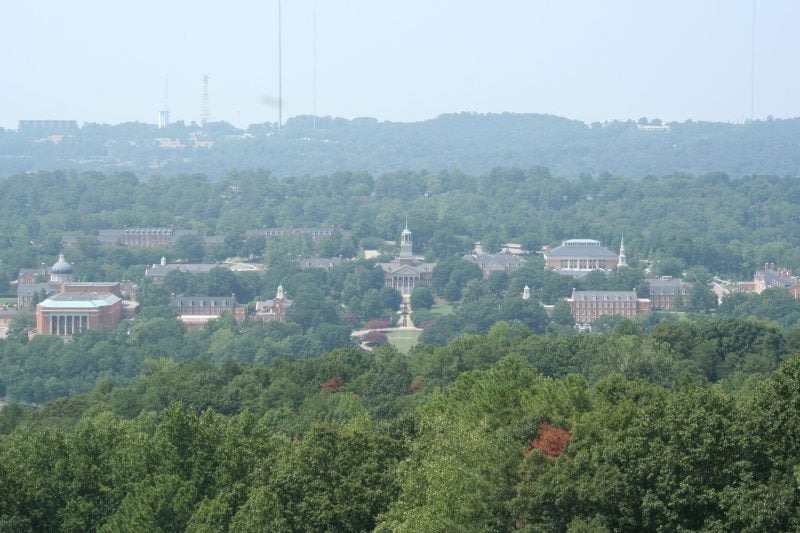
Homewood stands out as one of Alabama’s safer communities, particularly for violent crime. The city reports only 74 violent crimes per 100,000 people, placing it among the lowest rates in the United States.
Property crime rates are moderate at 24.62 per 1,000 residents annually. The southeast section of Homewood offers the best safety statistics for residents.
Crime risk varies by neighborhood within the city. Eastern areas have higher property crime rates with a 1 in 30 chance of victimization. The southeast neighborhoods provide better odds at 1 in 60.
Recent data shows Homewood’s crime rate increased 89% from 2022 to 2023. Despite this uptick, the city maintains its position as safer than many Alabama communities.
The areas with higher home values typically correlate with lower crime rates and better quality of life indicators.
8. Madison
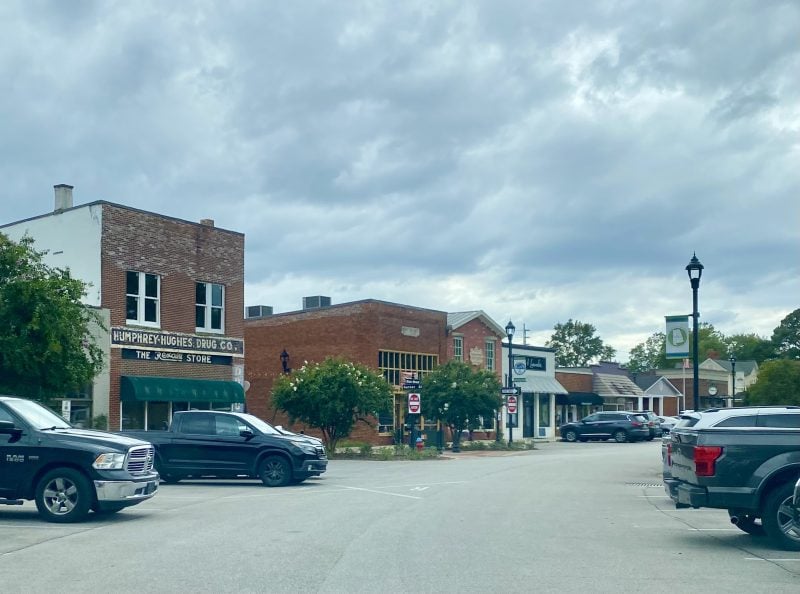
Madison consistently ranks among Alabama’s safest cities. The community maintains one of the lowest crime rates in the nation for cities of similar size.
Both violent and property crime rates receive high safety grades. Crime incidents remain relatively rare throughout the city.
The city’s neighborhoods vary in quality and home values. Market demand indicates residents prioritize areas with strong safety records.
Madison’s overall crime statistics significantly outperform national averages. Local communities actively work to maintain neighborhood safety standards.
Housing costs reflect the city’s desirability and safety reputation. The low crime environment contributes to Madison’s appeal for families and professionals.
Crime maps show consistent safety patterns across most residential areas. The city’s proactive approach to public safety helps maintain these low crime rates.
9. Fairhope

Fairhope ranks among Alabama’s safer communities, particularly in property crime statistics. The city reports 6.78 property crimes per 1,000 residents, significantly lower than Alabama’s state average of 29.26 per 1,000 residents.
The northeast section of Fairhope stands out as the safest area. Residents in this part of the city face odds of becoming crime victims at approximately 1 in 51.
The southwest neighborhoods present higher risk levels. Crime statistics show residents have a 1 in 21 chance of experiencing criminal activity in these areas.
Fairhope’s overall crime rate reaches 30.42 incidents per 1,000 residents annually. While this exceeds safety levels found in 51% of Alabama cities, the community maintains notably low property crime figures compared to state and national benchmarks.
The city’s tree-lined streets and established neighborhoods contribute to its reputation as a desirable residential location in Baldwin County.
10. Spanish Fort
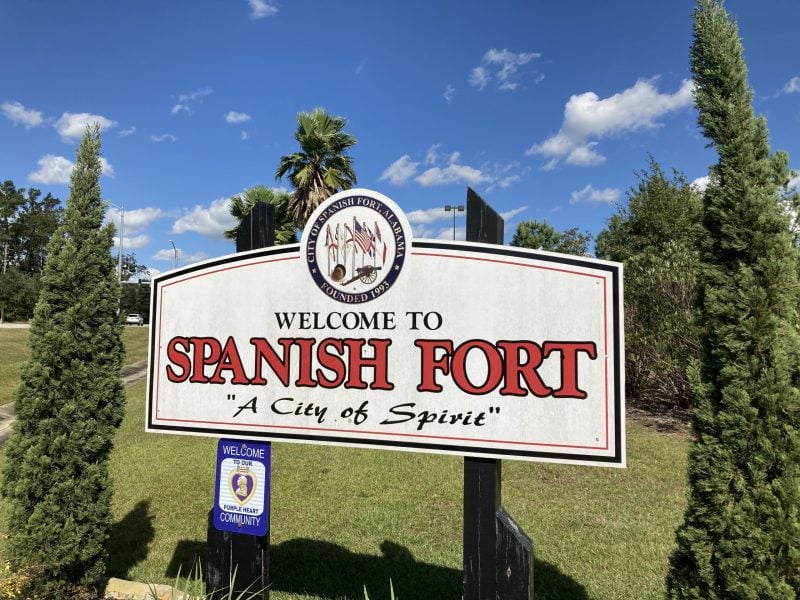
Spanish Fort maintains a crime rate 23.9% lower than the national average. The city recorded only 8 violent crimes per 10,000 people in 2019.
The violent crime rate stands at 1.551 per 1,000 residents annually. Property crime rates also fall below national averages.
Residents consider the northeast part of the city the safest area. The chance of becoming a violent crime victim varies by neighborhood, ranging from 1 in 517 in southwest areas to 1 in 782 in safer districts.
Crime rates vary significantly across different neighborhoods within Spanish Fort. Many areas provide safe environments for families and residents.
The city ranks among the safer communities in southeast Alabama. Local residents remain vigilant about safety concerns including potential scams and minor vandalism.
11. Pelham
Pelham stands out as one of Alabama’s safer communities with crime rates significantly below national averages. The city maintains an overall crime rate of 23.2 compared to the national average of 33.37.
Residents face a 1 in 628 chance of experiencing violent crime. Property crime occurs at a rate of 1 in 93, which remains lower than many comparable cities.
The community benefits from well-established neighborhoods with varying home values and safety profiles. Local residents generally consider Pelham a secure place to live despite occasional minor incidents.
Crime statistics show both violent and property crime rates fall below national benchmarks. The city’s safety record makes it attractive to families and professionals seeking secure residential areas.
Pelham’s neighborhoods offer different safety levels, with some areas demonstrating particularly low crime rates. The city’s commitment to public safety contributes to its reputation as a reliable choice for Alabama residents.
12. Foley
Foley stands out as one of Alabama’s safer communities, though it maintains mixed safety rankings. The city’s crime rate falls below the national average but exceeds some state benchmarks.
Property crimes occur less frequently than in many comparable cities. Violent crimes including murder, assault, and rape remain relatively low compared to national statistics.
Graham Creek Estates represents one of Foley’s most secure neighborhoods. This upscale area features tree-lined streets and exclusive residential properties that contribute to enhanced safety.
The city’s overall crime index measures 127, making it nearly twice as safe as the national average. However, Foley ranks higher in crime than 58% of Alabama’s cities and towns.
Housing quality varies significantly across different neighborhoods within Foley. Areas with higher property values typically correlate with lower crime rates and improved safety conditions.
13. Prattville
Prattville ranks among Alabama’s safer communities, though it faces some crime challenges. The city has crime rates higher than 73% of Alabama’s cities and towns.
Property crime affects residents at a rate of 10.91 per 1,000 people annually. The southwest area of Prattville stands out as the safest section of the city.
Crime risk varies significantly by neighborhood location. Residents in southwest areas face a 1 in 248 chance of property crime victimization. Northwest neighborhoods present higher risks with 1 in 64 odds.
The city reported 106 total crimes in recent data. Prattville’s overall crime rate sits 11.4% above the national average but remains below Alabama state averages.
Housing quality and neighborhood desirability differ greatly across Prattville’s various districts.
14. Hoover
Hoover stands as one of Alabama’s safer cities, ranking well among communities in the Birmingham metropolitan area. The city maintains a violent crime rate of 10.1, which falls significantly below the national average of 22.7.
Property crime presents a different picture. Hoover’s property crime rate reaches 36.4, slightly above the national average of 35.4. This includes incidents like burglary and theft.
When compared to similar-sized communities, Hoover performs better than average. The city ranks safer than 49% of Alabama’s cities and towns of all sizes.
Crime distribution varies across Hoover’s neighborhoods. Some areas experience higher crime rates than others, following patterns common in most urban locations.
The city’s overall safety profile makes it attractive to residents seeking secure communities. Housing values in safer neighborhoods tend to reflect this desirability, with marked variations in quality between different areas of the city.
15. Trussville
Trussville presents a mixed safety profile within Alabama’s landscape. The city has a crime rate higher than 68% of other Alabama communities.
However, violent crime rates tell a different story. Trussville’s violent crime rate stands at 13.7 per 100,000 residents, significantly below the national average of 22.7.
Property crime occurs at 23.95 incidents per 1,000 residents. This rate falls below Alabama’s state average of 29.26 but exceeds the national average of 20 incidents per 1,000 residents.
The east side of Trussville offers the safest neighborhoods. Residents in eastern areas face a 1 in 256 chance of property crime victimization.
Western neighborhoods present higher risk levels. The chance of becoming a property crime victim increases to 1 in 45 in these areas.
16. Florence
Florence presents a mixed safety profile among Alabama communities. The city’s crime rate exceeds 81% of other Alabama municipalities of comparable size.
Both violent and property crime rates in Florence surpass national averages. The overall crime rate reaches 45.17 per 1,000 residents, compared to the national average of 33.37 per 1,000 people.
Violent crimes including assault and other serious offenses occur at higher frequencies than typical American cities. Property crimes also exceed standard benchmarks across the United States.
Despite statistical data showing elevated crime rates, many Florence residents report feeling secure in their daily lives. Local community members generally view their city as safe for families and individuals.
Neighborhood quality varies significantly throughout Florence. Home values and safety levels differ considerably between various districts within the city limits.
17. Alabaster
Alabaster demonstrates strong safety credentials with one of the lowest violent crime rates in the United States. The city reports only 97 violent crimes per 100,000 people, placing it among the nation’s safest communities.
The city recorded zero homicides in the most recent crime reporting year. This statistic reinforces Alabaster’s reputation as a secure place for residents and families.
Property crime rates in Alabaster measure 27.4 per 100,000 residents, which remains below the national average of 35.4. The overall crime rate stands at 25.08, significantly lower than the national average of 33.37.
Alabaster ranks higher in crime than 57% of Alabama’s cities and towns of all sizes. However, the absolute numbers remain relatively low compared to national standards.
The city’s neighborhoods vary in quality and safety levels. Market-driven housing values often correlate with lower crime rates in specific areas of Alabaster.
18. Cullman
Cullman presents a mixed safety profile compared to state and national averages. The city has a violent crime rate of 1 in 463 residents, which is relatively low.
Property crime occurs more frequently at 1 in 35 residents. This translates to 45.06 property crimes per 1,000 residents, exceeding both Alabama’s rate of 29.26 and the national average of 20.
The overall crime rate stands at 49.15 per 1,000 people, higher than the national average of 33.37. However, local residents generally consider Cullman a safe place to live.
Neighborhood quality varies significantly throughout the city. Areas with higher home values tend to have lower crime rates and better quality of life indicators.
The safest neighborhoods correlate with market desirability and property values. Crime mapping data shows distinct variations across different areas of Cullman.
19. Athens
Athens has earned recognition as one of Alabama’s 15 safest cities according to a recent state study. The city achieved this ranking through its relatively low crime rate and high FEMA safety score.
The overall crime rate in Athens stands at 48.97 per 1,000 residents. This rate exceeds the national average of 33.37 but remains competitive within Alabama’s context.
Violent crime occurs at a rate of 19.14 per 1,000 residents. Property crimes account for 29.83 incidents per 1,000 residents, representing the majority of criminal activity in the area.
Athens ranks safer than 78% of Alabama’s cities and towns of all sizes. The city offers detailed crime maps and neighborhood-specific statistics to help residents identify the safest areas.
Local residents generally perceive their community as secure despite the statistical comparisons to national averages.
20. Gadsden
Gadsden faces significant safety challenges compared to other Alabama communities. The city has a total crime rate that is 91% higher than the national average per 100,000 residents.
More than 94% of communities within Alabama have lower crime rates than Gadsden. This places the city among the less safe areas in the state.
Property crime presents a particular concern in Gadsden. The property crime rate reaches 119.66 incidents per 1000 residents, substantially higher than Alabama’s rate of 29.26 incidents per 1000 residents.
The city experiences approximately 4.08 daily crimes total. This breaks down to 0.52 violent crimes and 3.57 property crimes per day.
Crime rates vary significantly across different neighborhoods within Gadsden. Some areas maintain better safety records than others, making neighborhood selection important for residents.
21. Opelika
Opelika faces crime challenges that place it among Alabama’s moderately safe cities. The city’s overall crime rate of 68.81 per 1,000 residents exceeds both state and national averages.
More than 88% of Alabama communities report lower crime rates than Opelika. Both violent and property crimes occur at higher frequencies compared to similar-sized cities.
The city shows significant neighborhood variation in safety levels. Areas with higher home values typically experience lower crime rates and better quality of life indicators.
Despite statistical concerns, many residents view Opelika as a safe place to live. Local community engagement helps maintain neighborhood security in various districts.
Crime mapping reveals that certain areas of Opelika perform better than others in terms of safety. Prospective residents should research specific neighborhoods before making housing decisions.
22. Phenix City
Phenix City presents a mixed safety profile among Alabama neighborhoods. The city’s crime rates are 96.8% higher than the national average, with significant variation across different areas.
The northwest section of Phenix City stands out as the safest area. Residents in this part of the city face the lowest crime risks compared to other neighborhoods.
Property crime rates in Phenix City average 15.85 per 1,000 residents annually. The chance of becoming a property crime victim varies dramatically by location within the city.
Eastern neighborhoods show higher crime rates, with residents facing a 1 in 27 chance of property crime victimization. Northwest areas offer much better odds at 1 in 124.
More than 95% of Alabama communities report lower crime rates than Phenix City. This places the city among the higher-crime areas within the state.
23. Saraland
Saraland offers residents varying levels of safety depending on location within the city. The west part of the city represents the safest area, with crime rates significantly lower than other neighborhoods.
Residents in western Saraland face a 1 in 43 chance of becoming a crime victim. This contrasts sharply with the northeast neighborhoods, where the risk increases to 1 in 13.
The overall crime rate in Saraland stands at 40.47 per 1,000 residents annually. The city’s crime statistics place it higher than 70% of Alabama’s cities and towns.
Property values in Saraland vary significantly by neighborhood, with safer areas commanding higher home prices. The western sections attract more buyers seeking lower crime rates.
Crime data indicates Saraland falls above national averages for total crime but below state averages. Violent and property crimes both contribute to the city’s safety profile.
24. Sylacauga
Sylacauga presents a mixed safety profile among Alabama communities. The city has a total crime rate that is 67% higher than the national average per 100,000 residents.
Within Alabama, more than 87% of communities have lower crime rates than Sylacauga. When compared to similar-sized cities, Sylacauga’s combined violent and property crime rates are notably higher than average.
The southwest part of Sylacauga is considered the safest area by residents. Property crime rates vary significantly by neighborhood, ranging from 1 in 56 chance of victimization in central areas to 1 in 166 in the southwest.
The city experiences approximately 1.3 daily crimes total. This breaks down to 0.2 violent crimes and 1.1 property crimes per day.
Property crime occurs at a rate of 9.781 per 1,000 residents annually. Neighborhood quality varies greatly throughout the city, with housing values reflecting these safety disparities.
25. Arab
Arab ranks as one of Alabama’s safer communities despite facing some crime challenges. The city maintains crime rates that are manageable compared to larger urban areas in the state.
Property crimes represent the majority of incidents in Arab. These include theft, burglary, and vehicle-related offenses that affect residents periodically.
Violent crime occurs less frequently than property crime in the area. The city experiences occasional incidents of assault and robbery, though serious crimes remain relatively uncommon.
Neighborhood safety varies throughout Arab based on location and housing values. Higher-value residential areas typically experience lower crime rates than other sections of the city.
Local law enforcement maintains an active presence throughout Arab’s neighborhoods. Police response times are generally reasonable for a city of this size in Alabama.
26. Anniston
Anniston faces significant safety challenges compared to other Alabama communities. The city has a total crime rate of 93.85 per 1,000 residents, which is notably higher than the national average of 33.37 per 1,000 people.
Violent crime represents a particular concern in Anniston. The violent crime rate reaches 44.55 per 1,000 residents, placing it among the highest rates in the nation across communities of all sizes.
Property crime also exceeds state and national benchmarks. Anniston records 70.06 property crimes per 1,000 residents, compared to Alabama’s rate of 29.26 per 1,000 residents.
The city experiences approximately 3.64 daily crimes total. This breaks down to 0.48 violent crimes and 3.16 property crimes per day.
Despite these statistics, some residents express positive views about neighborhood safety. However, the data indicates Anniston ranks lower among Alabama’s safest communities.
27. Decatur
Decatur ranks among Alabama’s moderately safe cities, though it faces some crime challenges. The city’s violent crime rate stands at 15.8 per 1,000 residents, which falls below the national average of 22.7.
Property crime rates in Decatur exceed both state and national averages. The city has higher crime rates than 81% of Alabama’s municipalities across all size categories.
Neighborhood safety varies significantly throughout Decatur. Areas with higher median home values typically experience lower crime rates and better quality of life indicators.
The city actively works with residents to maintain safe neighborhoods through community policing initiatives. Local authorities encourage citizen involvement in reporting suspicious activities and community concerns.
Decatur offers affordable housing options, which recently earned recognition as one of the most budget-friendly markets in the region. This affordability attracts families seeking value while maintaining reasonable safety standards.
28. Bessemer
Bessemer faces significant safety challenges that place it among Alabama’s most dangerous cities. The city’s violent crime rate reaches 33.1 per 1,000 residents, substantially higher than the national average of 3.8 per 1,000.
More than 100% of Alabama communities have lower crime rates than Bessemer. Property crimes and violent crimes including murder, assault, and rape exceed both state and national averages.
The city shows notable housing disparity, with neighborhood quality varying greatly throughout Bessemer. Market-driven areas with higher home values tend to have better safety records and quality of life indicators.
Residents considering Bessemer should research specific neighborhoods carefully. Crime statistics reveal consistent patterns that rank the city among the top 100 most dangerous cities nationwide.
Despite these challenges, some areas within Bessemer offer relatively better conditions than others based on property values and local market preferences.
29. Clanton
Clanton presents a mixed safety profile compared to national averages. The city has experienced fluctuating crime rates in recent years, with a notable 33% decrease in overall crime from 2022 to 2023.
Property crime remains a concern for residents. The chance of becoming a victim of property crime is approximately 1 in 25, with rates varying significantly by neighborhood.
The southwest part of Clanton is considered the safest area. Residents in this section face a 1 in 114 chance of property crime victimization, compared to 1 in 33 in central neighborhoods.
Crime distribution varies notably across different areas of the city. The property crime rate averages 15.32 per 1,000 residents annually.
Despite statistical concerns, many local residents report feeling safe in their community. This suggests that crime may be concentrated in specific areas rather than citywide.
30. Montevallo
Montevallo ranks as one of Alabama’s safer communities with a violent crime rate of 93 incidents per 100,000 residents. This rate places the city among the safest in the United States.
The city’s crime rate falls below approximately 58% of Alabama communities. When compared to similar-sized cities nationwide, Montevallo’s crime statistics align with average levels for communities of comparable size.
Neighborhoods within Montevallo show variation in safety and quality. The safest areas typically correspond with higher property values and better overall living conditions.
Crime data indicates that Montevallo maintains consistently low levels of violent crime. The city’s safety profile makes it an attractive option for families and individuals seeking secure residential areas.
Local crime trends remain stable with minimal fluctuation in reported incidents. Montevallo’s safety record contributes to its reputation as a desirable place to live in central Alabama.
What Makes a Neighborhood Safe?
A neighborhood’s safety depends on measurable crime statistics, active resident participation, and quick access to police, fire, and medical services. These three factors work together to create environments where families can thrive with minimal security concerns.
Crime Rates and Trends
Violent crime rates serve as the primary indicator of neighborhood safety. Areas with fewer than 2 violent crimes per 1,000 residents typically rank among the safest communities.
Property crime statistics reveal another crucial safety dimension. Neighborhoods with low burglary and theft rates often feature better street lighting and higher homeownership percentages.
Crime trend analysis shows whether safety conditions are improving or declining. Residents should examine 3-5 year data patterns rather than focusing on single-year statistics.
Police response data provides insight into law enforcement effectiveness. Areas with average response times under 8 minutes for emergency calls generally offer better protection.
Repeat offense locations indicate problem areas within neighborhoods. Streets with multiple incidents often require additional security measures or increased patrol presence.
Community Engagement
Active neighborhood watch programs create additional security layers beyond police protection. These volunteer groups monitor suspicious activity and maintain communication with local law enforcement.
Community participation in local government meetings demonstrates resident investment in safety issues. Neighborhoods with high meeting attendance rates often see faster resolution of security concerns.
Social cohesion among neighbors creates natural surveillance networks. Areas where residents know each other experience lower crime rates due to increased vigilance.
Regular community events strengthen bonds between neighbors. Block parties, neighborhood cleanups, and safety meetings foster environments where residents look out for one another.
Communication platforms like neighborhood apps enable rapid information sharing about safety concerns. Quick alerts about suspicious activity help prevent crimes before they occur.
Accessibility to Emergency Services
Police station proximity directly impacts response times during emergencies. Neighborhoods within 5 miles of stations typically receive faster assistance during critical situations.
Fire department accessibility becomes crucial for both emergency response and insurance considerations. Areas with fire stations within 3 miles often have lower homeowner insurance premiums.
Hospital and medical facility locations affect emergency medical response capabilities. Neighborhoods near major medical centers provide better outcomes during health emergencies.
911 call center efficiency varies by location and staffing levels. Communities served by well-funded dispatch centers experience shorter emergency response delays.
Infrastructure quality affects emergency vehicle access. Well-maintained roads and clear street signage enable faster response times during critical situations.
Lifestyle Benefits of Living in Alabama’s Safest Areas
Alabama’s safest neighborhoods offer residents enhanced quality of life through lower stress levels and stronger community bonds. These areas typically feature excellent schools, parks, and recreational facilities that create ideal environments for families.
Quality of Life
Residents in Alabama’s safest areas experience significantly lower stress levels due to reduced concerns about personal safety and property security. This peace of mind allows families to enjoy outdoor activities, evening walks, and community events without constant worry.
Property values in these secure neighborhoods tend to remain stable or appreciate over time. The combination of low crime rates and desirable amenities creates lasting investment value for homeowners.
Strong community connections naturally develop in safe neighborhoods. Residents participate more actively in local events, volunteer organizations, and neighborhood associations when they feel secure in their environment.
Commute times are often shorter in these areas, as many safe neighborhoods are strategically located near major employment centers and transportation routes. This reduces daily stress and provides more time for family activities.
Family-Friendly Amenities
Safe Alabama neighborhoods consistently feature well-funded school districts with higher academic performance ratings. Parents can choose from quality public schools without the safety concerns that plague other areas.
Parks and recreational facilities are abundant and well-maintained in these communities. Children can safely use playgrounds, sports fields, and walking trails without constant adult supervision.
Many safe neighborhoods offer community centers that host family activities, youth programs, and educational classes. These facilities strengthen neighborhood bonds while providing constructive outlets for residents of all ages.
Shopping and dining options are typically more diverse and accessible in safe areas. Families can enjoy local restaurants, retail stores, and entertainment venues within short distances of their homes.

